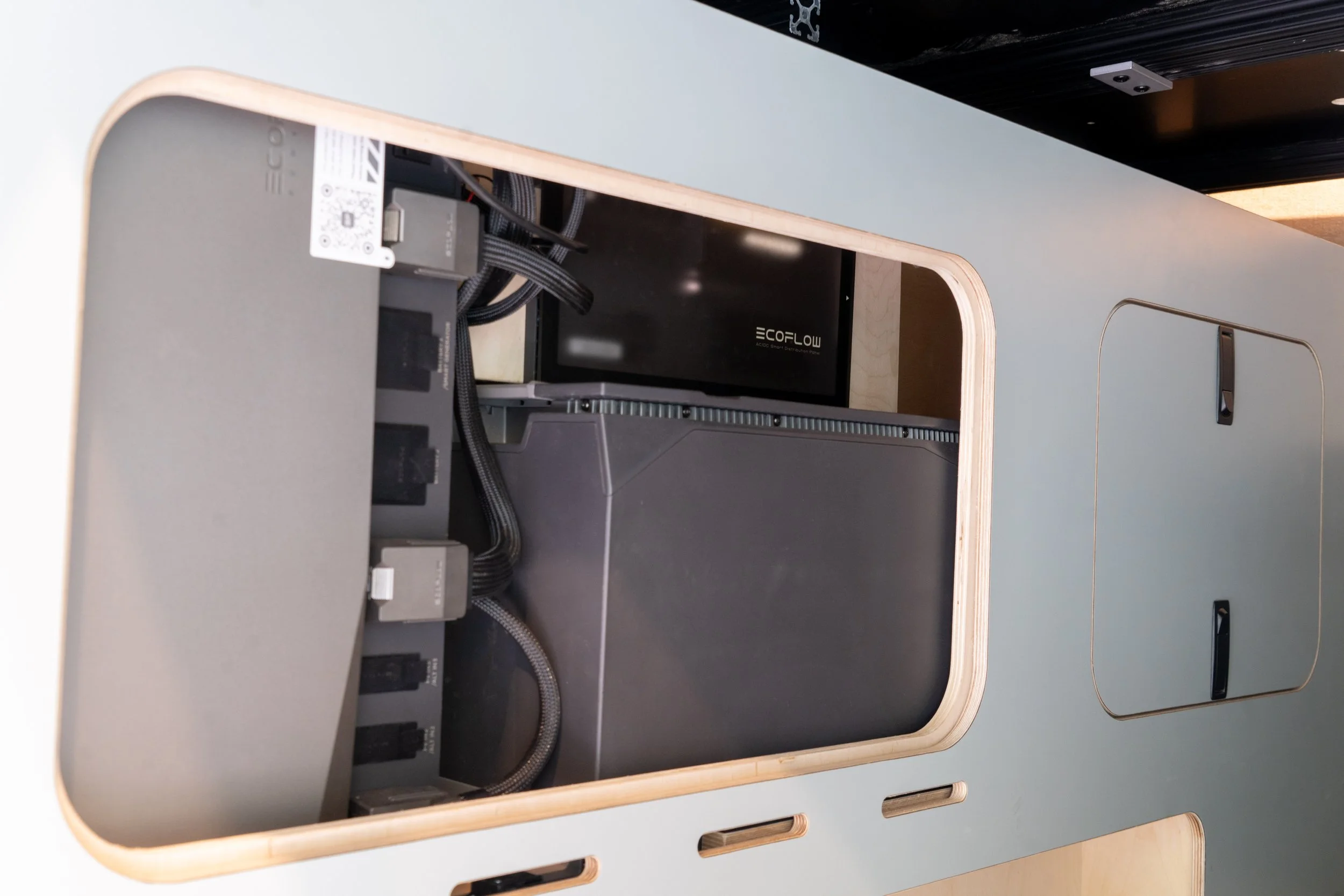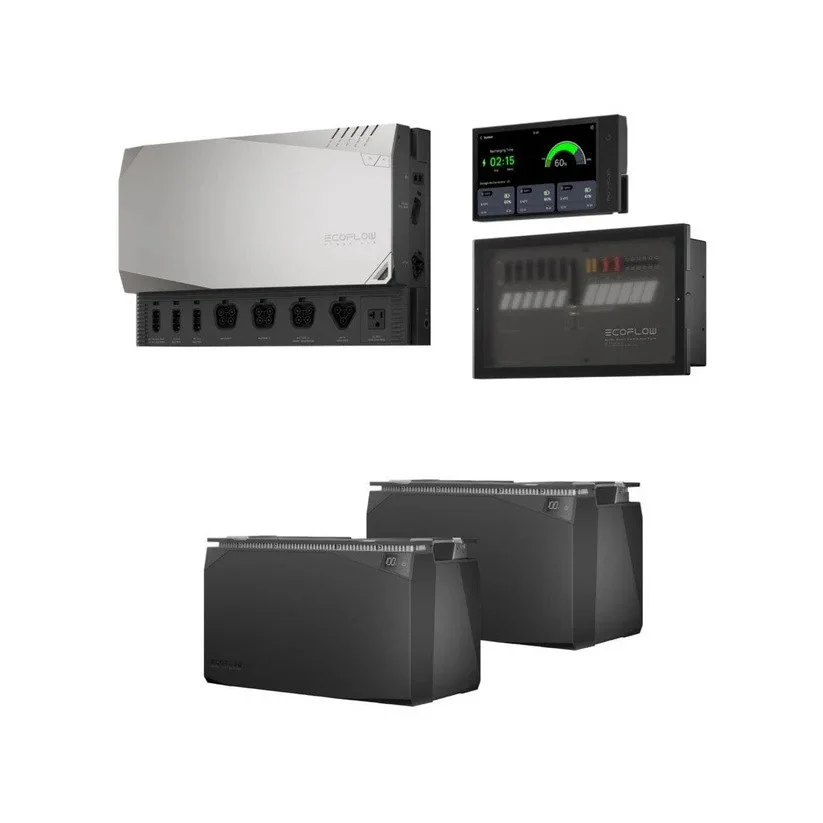EcoFlow vs. Bluetti: The Real Differences in Power, Price, and Performance
If you’re planning your van build, choosing your power system is one of your biggest decisions. It determines how you travel; how comfortably and how long you can live off grid, and how simple (or complicated) your install process will be.
We’ve built enough systems over the years to know how much time and troubleshooting goes into wiring everything from scratch. That’s why we now prefer plug and play power kits instead of building every system from individual components. These integrated systems dramatically reduce install time and troubleshooting. The companies we have been using in our vans- EcoFlow and Bluetti- have engineered their kits to handle the details that typically trip up DIY builders; proper communication between components, balanced charging and reliable protection circuitry. Just as importantly both brands back their gear with strong customer support and solid warranties, so when something does need attention there’s a clear path to service instead of a tangle of third party parts.
The EcoFlow Power Kit installed in a Habitat Electrical Cabinet.
And if you’re wondering which system to chose for your van build, we thought we’d break down the two systems that are leading the 48V power kit world right now: EcoFlow Power Kits and Bluetti RV5. Both offer modular, lithium iron phosphate (LFP) battery systems. Both can run your A/C, charge from solar or shore, and let you monitor everything from an app. But when you look closer, they’re designed with different priorities in mind. Both promise to simplify complex off grid installs by combining inverter, charger, solar controller and DC distribution into a single plug and play unit, but take a slightly different path to get there.
Here’s how they compare, what makes each unique, and which one’s the better fit for your style of travel and power use.
Bluetti’s new RV5 Power Hub is the newcomer, officially launched in 2025. Its pitch is simple: more power, faster charging, and an easier setup. It can deliver 5,000 watts of continuous AC output at 120 volts (enough to run an air conditioner, induction cooktop, and microwave simultaneously without thinking twice). It also accepts up to 5,000 watts of AC charging from shore or a generator, which means you can plug in and refill your batteries extremely quickly. Bluetti has leaned into speed and simplicity with what it calls “screw-and-play” assembly, claiming the main components can be connected in as little as half an hour. The system includes a 10.1-inch wired touchscreen and app control, with smart circuit-level management for both AC and DC loads.
EcoFlow’s Power Kit, on the other hand, has been around for a few years and has proven itself in hundreds of van and tiny-home installations. Where Bluetti pushes raw power, EcoFlow focuses on harvest and ecosystem. Its dual MPPT solar inputs can accept up to 4,800 watts of photovoltaic input- more than double Bluetti’s ceiling. That makes it an excellent fit for large solar arrays and people who spend long stretches off-grid. The inverter is slightly smaller at 3,600 watts continuous (with a 7,200-watt surge), but in practice, that’s still plenty for most off-grid rigs. Shore charging maxes out at 3,000 watts, and alternator input at 1,000 watts, which feels balanced for a solar-first setup.
Battery strategy is another major difference. Bluetti uses modular 48-volt LFP packs such as the B4810 (5.12 kWh each) and supports very large stacks- even 100-kWh-class setups in theory. Crucially, Bluetti also allows you to integrate third-party 48-volt batteries, which gives advanced builders a lot of flexibility. EcoFlow’s batteries are proprietary and come in fixed stack sizes of 5, 10, or 15 kWh, with about 3,500 cycles to 80% capacity. They’re proven, easy to integrate, and backed by EcoFlow’s ecosystem of accessories and support, but you’re committed to their format.
Ultimately, both systems have dramatically simplified off-grid power design. Compared to piecing together a Victron or DIY setup, they cut wiring time, reduce complexity, and leave you with a cleaner, more serviceable installation. The decision comes down to your power lifestyle: if you want the most AC power and fastest recharge from shore, go Bluetti. If you want the most solar input and a proven, widely supported ecosystem, go EcoFlow.
In terms of cost, both systems live in the premium all-in-one category, but there’s a clear difference in entry price. Bluetti’s RV5 Power Kit starts around $5,000 CAD for the core Power Hub and a single 5.12 kWh battery, which makes it one of the most affordable ways to get into a 48 V integrated setup. EcoFlow Power Kits, by comparison, start closer to $9,000 CAD for a 5 kWh bundle and scale up quickly with additional batteries or solar input. EcoFlow’s pricing reflects its mature ecosystem, established availability, and proven performance, while Bluetti’s lower starting point (and its ability to work with third-party 48 V batteries) can offer real savings for builders who want flexibility or plan to expand over time. Either way, the value lies in the fact that both options deliver clean, reliable power and dramatically simplify what used to be a complex, multi-component install.
So what really separates them? It mostly comes down to three key points:
Plug a Play Vs Screw and Play
The EcoFlow system is designed to be almost entirely plug-and-play, with very few screw terminals and clearly marked, proprietary connectors that can’t be plugged in the wrong way. Every connection that matters is keyed, which makes installation straightforward and helps prevent common wiring mistakes. As a result, issues caused by user error are rare, even for first-time builders.
The Bluetti system, on the other hand, uses more conventional screw terminals and standard wiring methods. It still goes together quickly, but it requires a bit more attention to detail and some basic electrical know-how to get everything connected correctly. Builders with experience will appreciate the flexibility, but beginners may want to take their time or have a professional handle the install.
2. Trust
The Bluetti system is brand new to the market, so it hasn’t yet built a track record over time. The EcoFlow Power Kit, in contrast, is tried and tested- any issues that have come up are well documented, and both software and hardware updates have already been implemented to address them.
3. Cost
A Bluetti system of comparable size costs nearly 40% less than an equivalent EcoFlow Power Kit, with the Bluetti system starting at around $5000 vs the EcoFlow at closer to $9000.
⚡ Quick Compare
If you value a more mature, closed ecosystem and cost is not a factor choose Ecoflow. If you prefer to have more third party options, and don’t mind the screw terminals, plus want to save money on the electrical system go Bluetti.
Both the EcoFlow Power Kit and Bluetti RV5 are available through our online store- visit our shop to see current pricing and bundle options.




